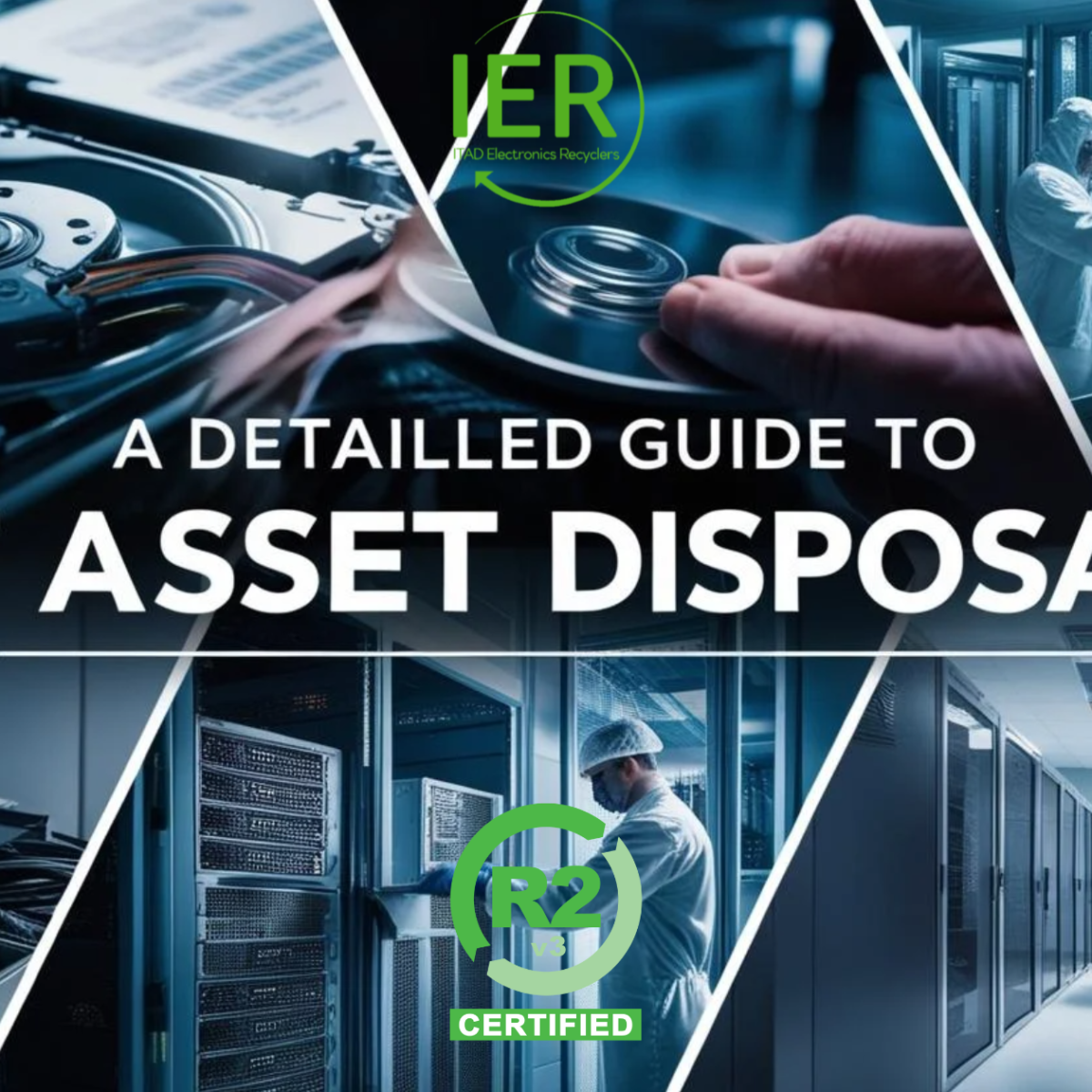Every business eventually faces the challenge of disposing of outdated IT equipment. Whether it’s old servers, workstations, or networking devices, simply throwing them away isn’t an option. Improper IT asset disposal can lead to data breaches, environmental harm, and legal consequences.
A proper IT Asset Disposition (ITAD) strategy ensures that retired IT assets are handled securely, ethically, and in compliance with industry regulations. This guide will walk you through the entire IT asset disposal process, covering data security, environmental compliance, value recovery, and industry best practices.
1. Understanding IT Asset Disposal
IT asset disposal (ITAD) refers to the secure and responsible decommissioning of IT equipment. It involves more than just physically discarding old devices—it requires a structured process to ensure data security, compliance, and sustainability.
Businesses must consider:
- Data Security Risks – Old hard drives and storage devices often contain sensitive information that must be securely erased.
- Environmental Impact – E-waste contains hazardous materials that can contaminate landfills and water sources.
- Regulatory Compliance – Failing to dispose of IT assets correctly can result in fines and legal penalties.
📌 Related: Why Data Destruction Matters for Your Business’s Security
2. Key Steps in IT Asset Disposal
Step 1: Inventory and Asset Tracking
Before disposal, businesses should audit their IT assets. A complete inventory helps identify:
- Which assets are no longer in use.
- What can be resold, refurbished, or recycled.
- Which devices contain sensitive data.
An IT asset tracking system helps ensure compliance and transparency throughout the disposal process.
📌 Related: Understanding R2 Certification: What It Means for Your Business
Step 2: Data Sanitization and Destruction
Before any IT asset leaves your facility, all data must be securely removed. Simply deleting files is not enough—data can still be recovered without proper sanitization. The most effective methods include:
- NIST 800-88 Guidelines for secure data erasure.
- DoD 5220.22-M three-pass overwrite for wiping hard drives.
- Physical destruction (shredding or degaussing) for storage devices that cannot be reused.
A Certificate of Data Destruction should always be provided by your ITAD vendor as proof of compliance.
📌 Backlink: NIST 800-88 Data Destruction Standards
Step 3: Sorting for Reuse, Recycling, or Disposal
Not all IT assets should be destroyed—many devices still hold value. IT assets can be sorted into three categories:
- Refurbish & Resell: Devices that can be upgraded and sold in secondary markets.
- Recycle: Non-functional components that need proper material recovery.
- Dispose: End-of-life electronics that must be safely discarded.
A certified ITAD provider can assess which assets have resale value, helping businesses recover costs.
📌 Related: How ITAD Can Generate Revenue for Your Business
Step 4: Responsible E-Waste Recycling
E-waste disposal is a significant concern due to toxic components like lead, mercury, and cadmium. A responsible ITAD vendor should:
- Comply with EPA regulations for electronic waste management.
- Use R2 or e-Stewards-certified recyclers to prevent unethical dumping.
- Provide Certificates of Recycling as proof of environmental responsibility.
📌 Backlink: EPA Guidelines on Electronics Recycling
3. Choosing the Right ITAD Vendor
Not all IT assets should be destroyed—many devices still hold value. IT assets can be sorted into three categories:
- Refurbish & Resell: Devices that can be upgraded and sold in secondary markets.
- Recycle: Non-functional components that need proper material recovery.
- Dispose: End-of-life electronics that must be safely discarded.
A certified ITAD provider can assess which assets have resale value, helping businesses recover costs.
4. Regulations and Compliance Standards
Businesses handling IT asset disposal must comply with federal, state, and industry-specific regulations. Key compliance standards include:
- HIPAA – Requires secure disposal of electronic health records.
- GDPR – Enforces strict data protection laws for companies handling EU customer data.
- SOX (Sarbanes-Oxley Act) – Mandates secure disposal of financial records.
A certified ITAD vendor will ensure that IT asset disposal aligns with these legal requirements.
5. Financial Benefits of Proper IT Asset Disposal
ITAD is not just about getting rid of old electronics—it’s also a strategic financial decision. A well-managed IT asset disposition process can:
- Generate revenue from refurbished assets.
- Reduce disposal costs by maximizing resale value.
- Improve sustainability credentials, which can enhance a company’s reputation.
6. Common Mistakes to Avoid in IT Asset Disposal
Many businesses unknowingly make critical mistakes during the disposal process, such as:
- Failing to properly erase sensitive data, leading to potential data breaches.
- Using uncertified recyclers, which can result in illegal e-waste dumping.
- Not keeping disposal records, which can lead to compliance violations.
Working with a certified ITAD provider helps businesses avoid these risks and ensures a smooth, compliant IT asset disposal process.
📌 Related: Top ITAD Mistakes Businesses Should Avoid
Conclusion: The Importance of Proper IT Asset Disposal
A structured IT asset disposal process is essential for data security, regulatory compliance, and environmental responsibility. By following best practices and working with certified ITAD vendors, businesses can:
- Prevent data breaches by securely sanitizing storage devices.
- Reduce environmental impact by recycling e-waste responsibly.
- Maximize financial returns by refurbishing and reselling IT assets.
If your business needs a trusted ITAD partner, IER ITAD Electronics Recycling provides certified, secure, and eco-friendly IT asset disposition services. Contact us today to discuss your ITAD needs.





